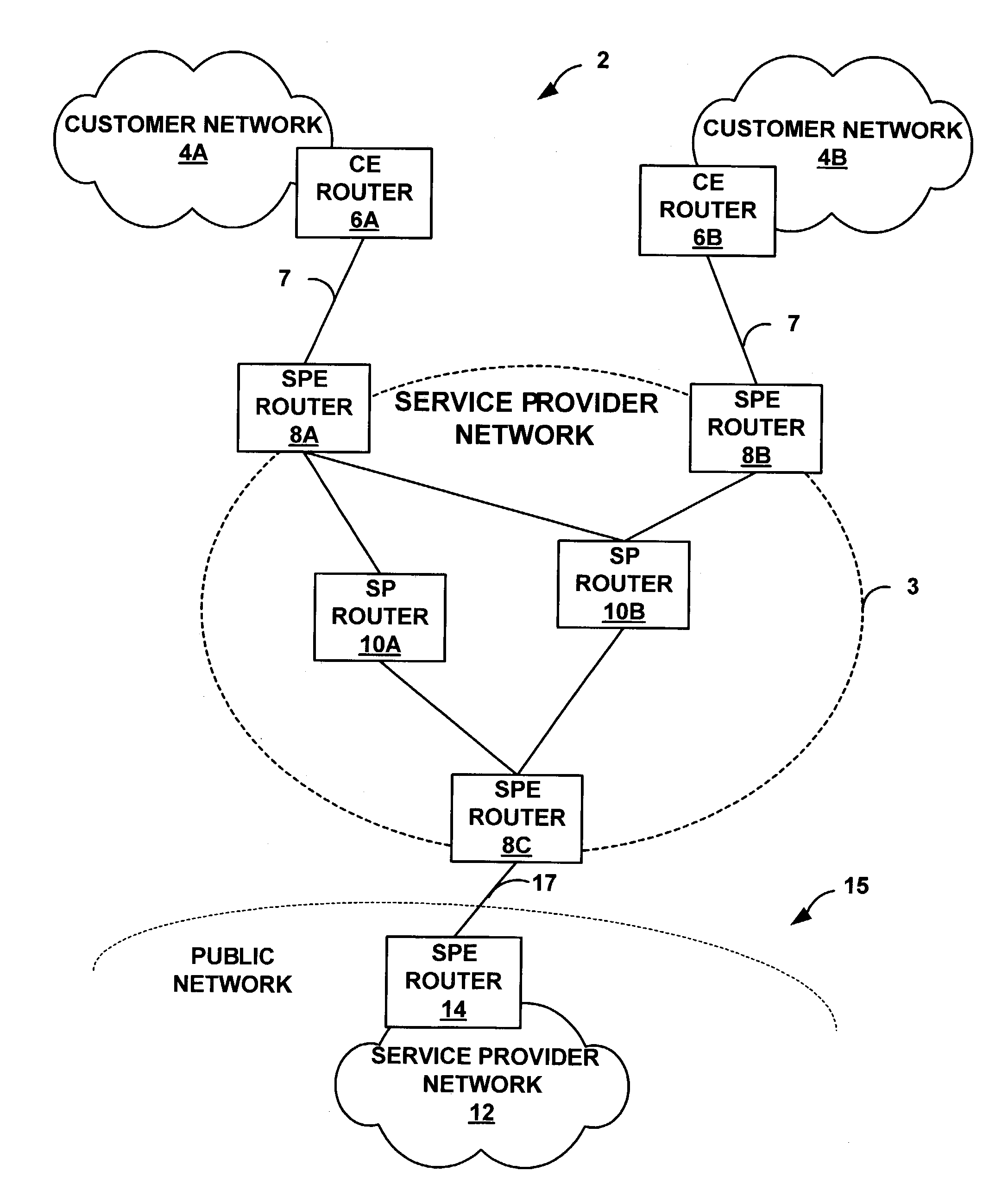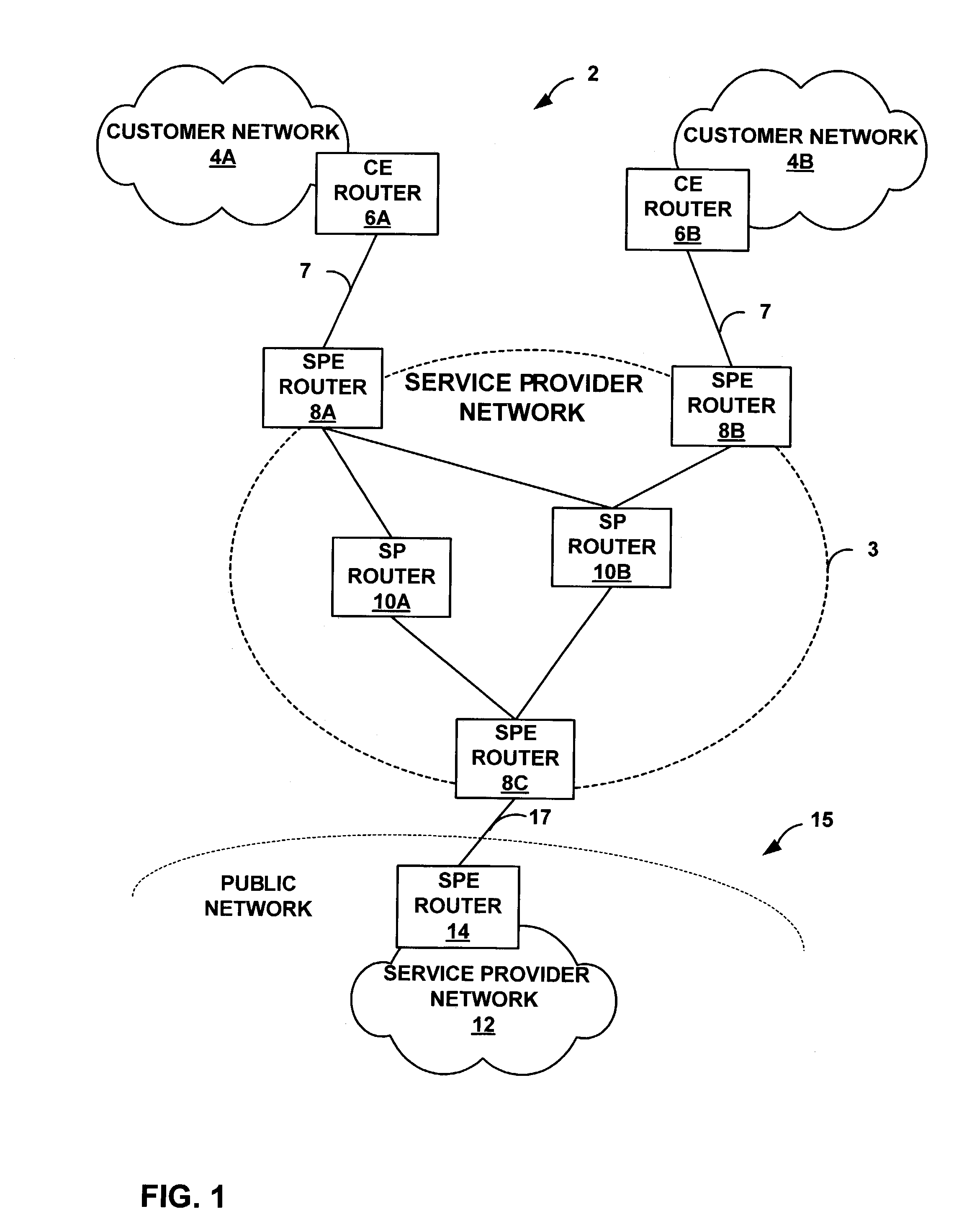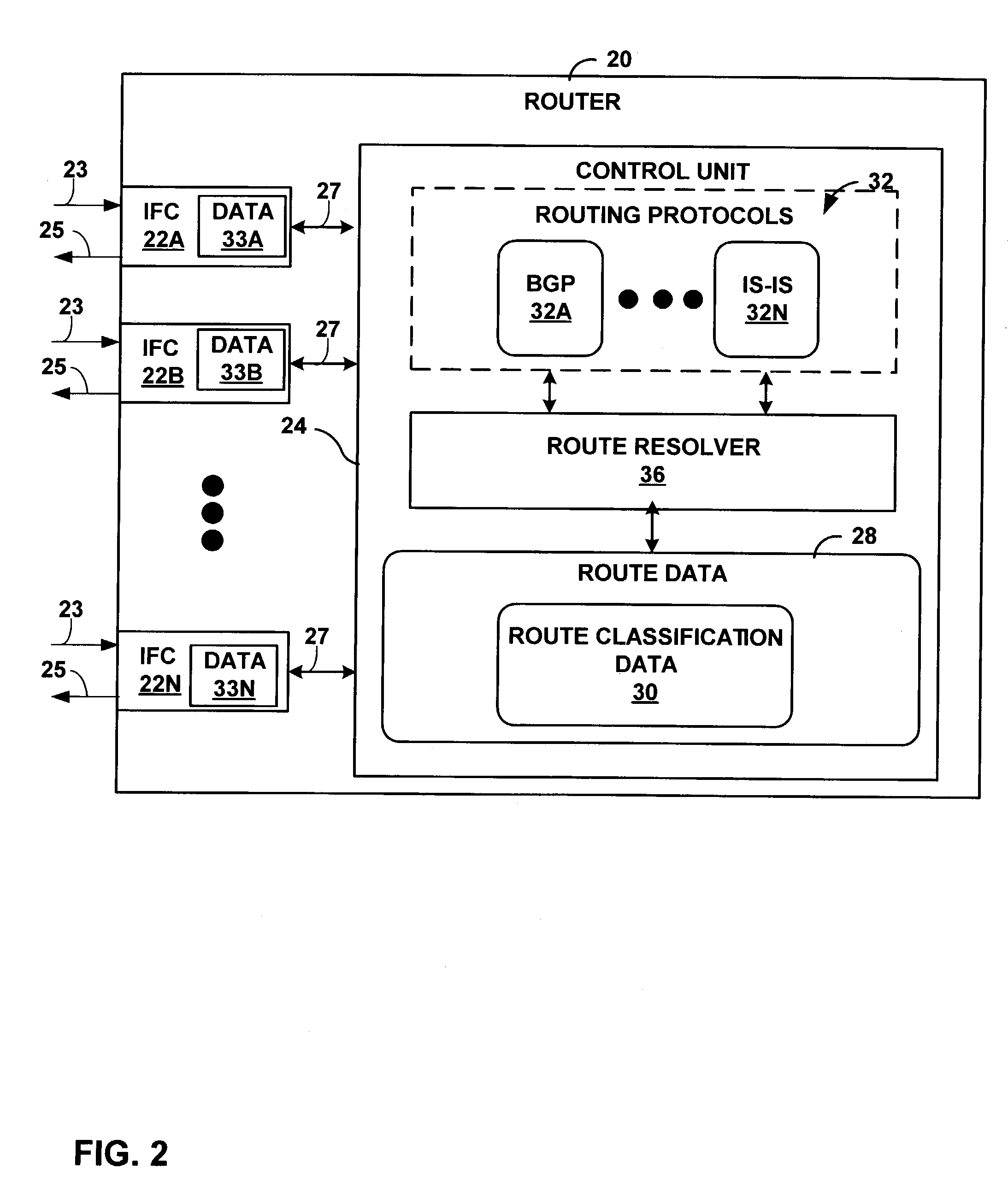Automatic filtering to prevent network attacks
a network attack and automatic filtering technology, applied in the field of computer networks, can solve problems such as affecting the performance of the network, so as to achieve the effect of preventing network attacks
- Summary
- Abstract
- Description
- Claims
- Application Information
AI Technical Summary
Benefits of technology
Problems solved by technology
Method used
Image
Examples
Embodiment Construction
[0028]FIG. 1 is a block diagram illustrating an example network environment 2 in which a service provider (SP) network 3 automatically filters network traffic in accordance with the principles of the invention. As illustrated, SP network 3 is coupled to a plurality of “external” networks. For example, SP network 3 provides network connectivity to a plurality of customer networks 4A, 4B (“customer networks 4”). In particular, SPE routers 8A, 8B are coupled to customer edge (CE) routers 6A, 6B (“CE routers 6”) via access links 7. Although an actual service provider may provide services to a large number of dispersed customer networks 4, for simplicity, FIG. 1 shows only two customer networks 4 served by the service provider edge (SPE) routers 8A, 8B.
[0029]In addition, SP network 3 may be coupled to one or more external service provider networks, which may form part of a large-scale public network 15, e.g., the Internet. For example, SPE router 8C is coupled to SPE router 14 of SP netw...
PUM
 Login to View More
Login to View More Abstract
Description
Claims
Application Information
 Login to View More
Login to View More - R&D
- Intellectual Property
- Life Sciences
- Materials
- Tech Scout
- Unparalleled Data Quality
- Higher Quality Content
- 60% Fewer Hallucinations
Browse by: Latest US Patents, China's latest patents, Technical Efficacy Thesaurus, Application Domain, Technology Topic, Popular Technical Reports.
© 2025 PatSnap. All rights reserved.Legal|Privacy policy|Modern Slavery Act Transparency Statement|Sitemap|About US| Contact US: help@patsnap.com



